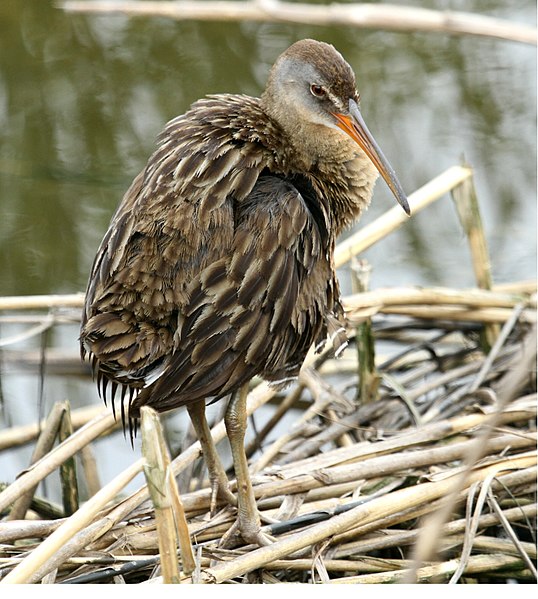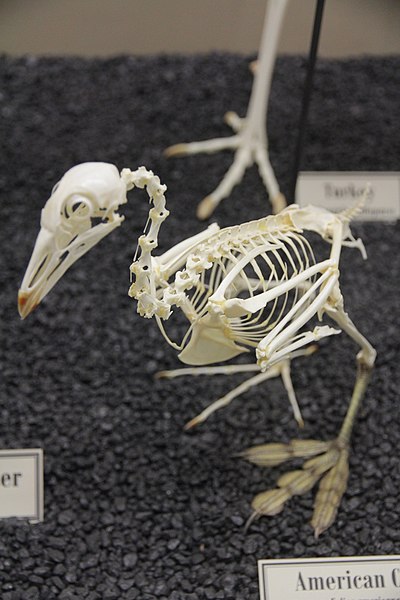The clapper rail is a member of the rail family, Rallidae. The taxonomy for this species is confusing and still being determined. It is a large brown rail that is resident in wetlands along the Atlantic coasts of the eastern United States, eastern Mexico and some Caribbean islands. This species was formerly considered to be conspecific with the mangrove rail.
Clapper rail
South Padre Island Birding and Nature Center - Texas
Clapper rail in Lakeland, Florida.
Rails are a large, cosmopolitan family of small- to medium-sized terrestrial and/or semi-amphibious birds. The family exhibits considerable diversity in its forms, and includes such ubiquitous species as the crakes, coots, and gallinule; other rail species are extremely rare or endangered. Many are associated with wetland habitats, some being semi-aquatic like waterfowl, but many more are wading birds or shorebirds. The ideal rail habitats are marsh areas, including rice paddies, and flooded fields or open forest. They are especially fond of dense vegetation for nesting. The rail family is found in every terrestrial habitat with the exception of dry desert, polar or freezing regions, and alpine areas. Members of Rallidae occur on every continent except Antarctica. Numerous unique island species are known.
Rail (bird)
South Island takahē (Porphyrio hochstetteri) from behind, showing the short, soft, and fluffy remiges typical of flightless rails
American coot (Fulica americana) skeleton on display at the Museum of Osteology.
The Guam rail is an example of an island species that has been badly affected by introduced species.







